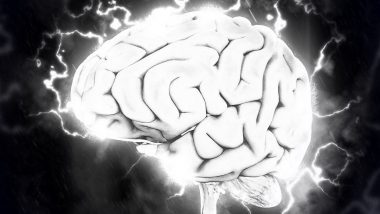Kozhikode, July 05: A 14-year-old boy in Kerala, identified as Mridul, has died from primary amoebic meningoencephalitis (PAM), a rare brain disease caused by a free-living amoeba found in contaminated water. Mridul contracted the infection after bathing in a reportedly contaminated pond in Kozhikode.
This marks the third death in the state from the infection in the past three months. Mridul was admitted to a private hospital on June 24 and was under treatment before succumbing to the disease on Thursday. Brain-Eating Amoeba: 12-Year-Old Boy From Kerala’s Kozhikode Infected by Free-Living Amoeba; Third Case in State.
Previously, two other deaths were reported: a five-year-old girl from Malappuram in May and a 13-year-old girl from Kannur in June. In response to these incidents, State Health Minister Veena George convened a high-level meeting of the health department two days ago. During the meeting, it was decided that special guidelines would be issued to address amoebic meningoencephalitis. Second Death Due to 'Brain-Eating Amoeba' in Kerala: Teen Girl Dies of Rare Brain Infection 'Amoebic Meningoencephalitis' in Kozhikode.
What is PAM?
Primary amoebic meningoencephalitis (PAM) is caused by Naegleria fowleri, a single-celled organism that inhabits warm freshwater and soil. The amoeba infects people by entering the body through the nose, typically during activities such as swimming. Once inside, it travels to the brain, causing severe damage and inflammation.
Naegleria fowleri thrives in temperatures up to 46 degrees Celsius and is commonly found in warm freshwater environments, including lakes, rivers, poorly maintained swimming pools, splash pads, surf parks, and other recreational water venues. Known as the "brain-eating amoeba," it enters the body through the nose and migrates to the brain, where it destroys brain tissue and causes swelling.
It is important to note that people cannot get infected by drinking contaminated water, and the infection is not communicable from person to person.
Symptoms of PAM
Initial symptoms of primary amoebic meningoencephalitis (PAM) include headache, fever, nausea, and vomiting. As the infection progresses, symptoms can escalate to a stiff neck, confusion, seizures, hallucinations, and eventually coma. According to the US Centers for Disease Control and Prevention (CDC), most people with PAM die within 1 to 18 days after symptoms begin, typically leading to coma and death around five days after onset.
It is important to note that there are no definitive treatments for primary amoebic meningoencephalitis currently. Doctors use a combination of drugs such as amphotericin B, azithromycin, fluconazole, rifampin, miltefosine, and dexamethasone, but these treatments have not been consistently effective.
(The above story first appeared on LatestLY on Jul 05, 2024 09:31 AM IST. For more news and updates on politics, world, sports, entertainment and lifestyle, log on to our website latestly.com).













 Quickly
Quickly





















